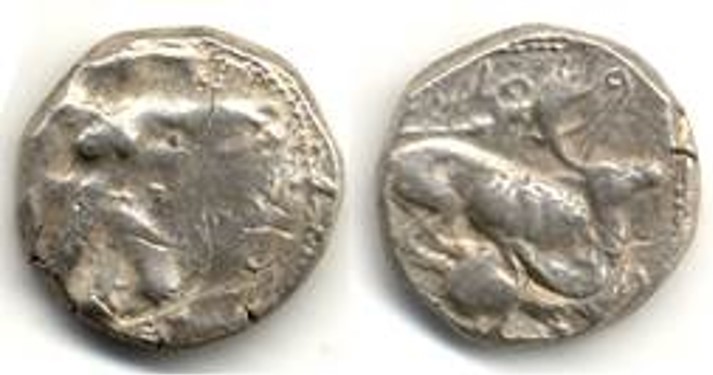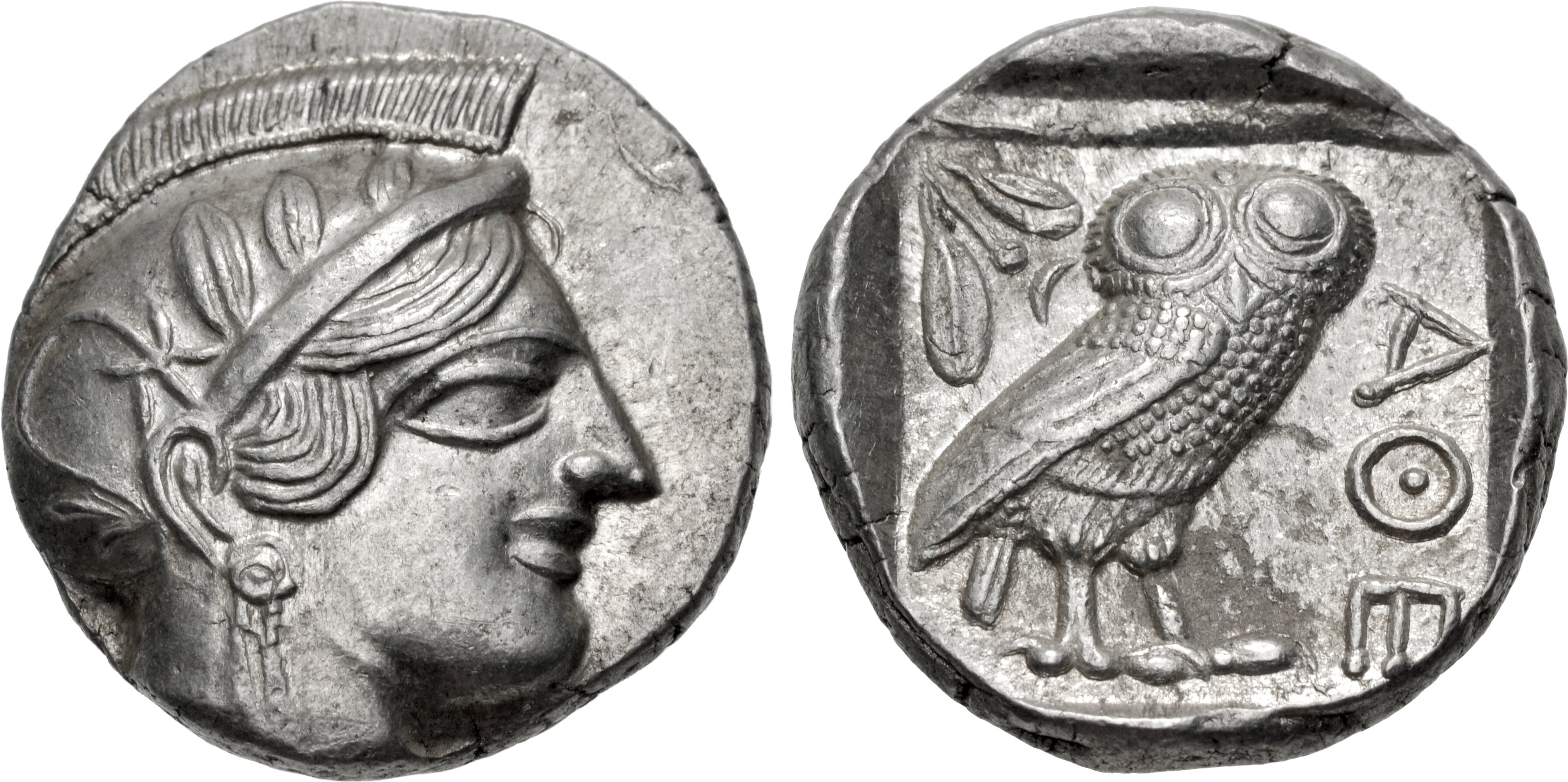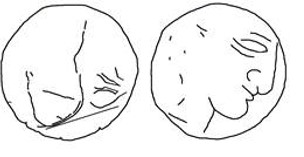425 BCE - 400 BCE | B'LMLK (in Aramaic)
Overstriking coin
Citium_over_Athens_London_BM.jpg
Overstruck variety
Athens under Citium.jpg
[1]
Citium_over_Athens_London_BM_drawing.jpg
Description
| ObverseInscription or printing placed on the obverse.:
|
Herakles in fighting stance to right, wearing lion skin upon his back and tied around neck, holding club overhead in right hand and bow extended before him in left hand. Dotted border.
|
ReverseInscription or printing placed on the reverse.:
|
B'LMLK (in Aramaic) (Aramaic) Lion attacking stag crouching right inside dotted border within incuse square.
|
Mint and issuing power
Chronology
| FromIdentifies the initial date in a range assigned in a numismatic context. 425 BCE toIdentifies the final date in a range assigned in a numismatic context.. 400 BCE
|
Classical 480-323 BC  periodTime period of the numismatic object. periodTime period of the numismatic object.
|
Physical description
MetalThe physical material (usually metal) from which an object is made.: Silver 
|
WeightWeight of the numismatic object (in grams). in grams: 11.7111.71 g <br />11,710 mg <br />
|
DenominationTerm indicating the value of a numismatic object. Examples: tetradrachm, chalkous, denarius.: double siglos 
|
|
|
|
StandardStandard.: Persian
|
References
Description
| ObverseInscription or printing placed on the obverse.:
|
Head of Athena right, wearing Attic helmet (visible: front of the neck, chin, lips of Athena, as well as the outline of the flattened and much distorted nose).
|
ReverseInscription or printing placed on the reverse.:
|
Skew pattern incuse square.
|
Mint and issuing power
| MintIdentifies the place of manufacture or issue of a numismatic object. ᵖ:
|
Athens
|
Ancient regionAncient region. ᵖ
|
Attica
|
Modern countryModern country: Greece
|
AuthorityIdentifies the authority in whose name (explicitly or implicitly) a numismatic object was issued. ᵖ:
|
|
Chronology
| FromIdentifies the initial date in a range assigned in a numismatic context. 480 BCE toIdentifies the final date in a range assigned in a numismatic context.. 457 BCE
|
Classical 480-323 BC  periodTime period of the numismatic object. periodTime period of the numismatic object.
|
Physical description
| DenominationTerm indicating the value of a numismatic object. Examples: tetradrachm, chalkous, denarius. ᵖ:
|
tetradrachm 
|
StandardStandard. ᵖ:
|
Attic
|
References
References
- ^ Wroth, Warwick William (1886), A Catalogue of the Greek coins in the British Museum. vol. X : Crete and the Aegean Islands, London, The Trustees, p. 152, pl. XXIX
- ^ Tziambazis, Elias (2002), A catalogue of the coins of Cyprus: from 560 B.C. to 1571 A.D., Larnaca, 89 p.
- ^ Hoover, Oliver D. (2010), The Handbook of Greek Coinage Series, volume 6 : handbook of coins of the islands: Adriatic, Iionian, Thracian, Aegean, and Carpathian seas (excluding Crete and Cyprus), sixth to first centuries BC, Lancaster, 358 p.
- ^ Meadows, Andrew (forthcoming), Greek coinage in the Persian Empire: The Malayer 1934 Hoard (IGCH 1790).
 Traces of the overstruck variety
Traces of the overstruck variety

